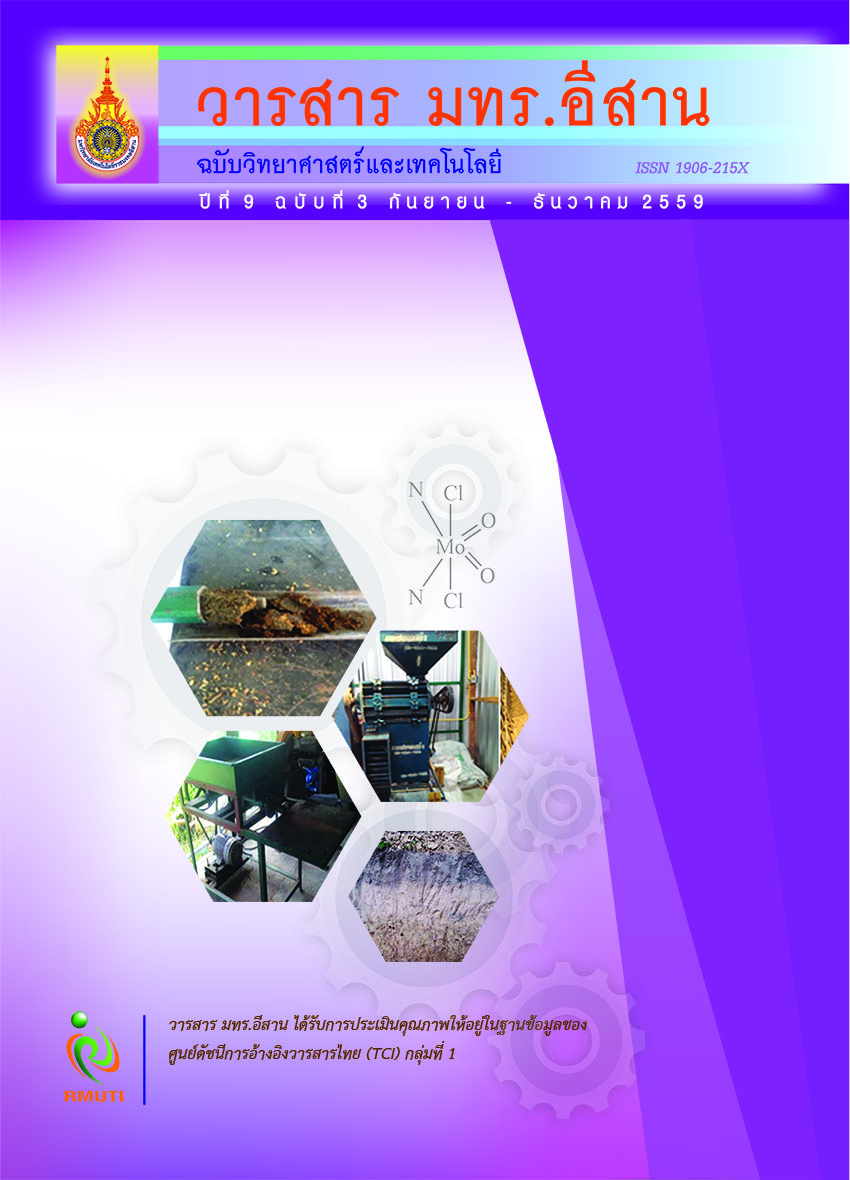โปรแกรมประยุกตนำทัวร์อัตโนมัติบนอุปกรณ์เคลื่อนที่โดยใช้การตรวจจับสถานที่ ร่วมกับเทคโนโลยีความจริงเสริม Automatic Tour Guide Application on Mobile Using Location Detection and Augmented Reality Technology
Main Article Content
บทคัดย่อ
บทคัดย่อ
เนื่องจากในปัจจุบันการเติบโตทางด้านการท่องเที่ยว รวมถึงการเยี่ยมชมและแนะนำสถานที่ เกิดขึ้น
เปน็ จำนวนมาก ทำใหบุ้คลากรในการแนะนำสถานที่ไมเ่ พียงพอตอ่ ความตอ้ งการ โดยเฉพาะอยา่ งยิ่งเมื่อเปดิ
ประชาคมเศรษฐกิจอาเซียน จะทำให้มีชาวต่างชาติที่สื่อสารด้วยภาษาที่แตกต่างกันเพิ่มมากขึ้น ทำให้เกิด
ปญั หาในการติดตอ่ สื่อสาร งานวิจัยนี้จึงไดน้ ำเสนอโปรแกรมประยุกตน์ ำทัวรบ์ นอุปกรณเ์ คลื่อนที่เพื่อนำทาง
และแสดงสถานที่สำคัญ พรอ้ มทั้งจัดเสน้ ทางนำทัวรแ์ บบอัตโนมัติดว้ ยเทคนิคในการแกป้ ญั หาการเดินทาง
ของพนักงานขายรว่ มกับสมการฮาเวอร์ไซน์ในการคำนวณระยะหา่ งระหวา่ งจีพีเอส จากนั้นจะนำทางพรอ้ มบอก
เส้นทางเดินแก่ผู้ใช้ผ่านแผนที่ ระบบจะสามารถโต้ตอบและแสดงข้อมูลต่าง ๆ แบบอัตโนมัติเมื่อถึง
สถานที่เยี่ยมชม ร่วมกับเทคโนโลยีความจริงเสริม มาเพิ่มประสบการณ์เยี่ยมชมแบบใหม่ นอกจากนี้
เพื่อรองรับผูเ้ ยี่ยมชมตา่ งชาติ ระบบสามารถรองรับไดท้ ั้งภาษาไทย และภาษาอังกฤษ งานวิจัยนี้ไดท้ ดสอบ
ผ่านกรณีศึกษาของมหาวิทยาลัยกรุงเทพ วิทยาเขตรังสิต โดยผลลัพธ์ที่ได้คือ ผู้เยี่ยมชมสามารถไปยัง
สถานที่สำคัญต่าง ๆ ในมหาวิทยาลัยได้อย่างถูกต้อง ได้ข้อมูลครบถ้วน และเกิดความประทับใจจาก
การเยี่ยมชมผา่ นระบบที่นำเสนอรว่ มกับเทคโนโลยีความจริงเสริม พรอ้ มทั้งไดน้ ำโปรแกรมมาทำการประเมิน
ประสิทธิภาพการทำงาน โดยผู้ใช้งานทั้งบุคคลภายในและภายนอกมหาวิทยาลัยซึ่งได้รับผลตอบกลับ
ด้านความแม่นยำในการทำงานแบบออนไลน์ที่ดีกว่าแบบออฟไลน์ และความพึงพอใจอยู่ในระดับที่ดี
ซึ่งผลลัพธ์เหล่านี้จะเป็นประโยชน์ในการพัฒนาระบบนำทัวร์ต่อไป
Abstract
In many organizations, e.g., government units and universities, the number of visitors
have been increasing so tremendously that the number of guides is not enough anymore.
Especially when the ASEAN Economic Community opens, there will be a lot of visitors
speaking several languages; this can cause a serious communication issue between
guides and visitors. In this paper, we present a smart and user-friendly mobile
application that can guide visitors automatically depending on the user locations.
All points of interests are listed and shown in the system. Also, the suitable visiting route
can be automatically generated using the “Traveling Salesman Problem” algorithm along
with the Haversine formula to compute a distance between two location points.
Upon arrival, the system will display informative streaming videos presenting history
and information of those places by utilizing “Reminder by Location Service” along with
“Augmented Reality Technology.” The program can support Thai and English languages.
The experiments were conducted at Bangkok University, Rangsit campus by visitors
from inside and outside of the university. The results showed that the online
mode is more accurate than the offline mode for the location detection. Also, the feedback
from users has shown the they are satisfied with the system.
Article Details
เอกสารอ้างอิง
[2] Applegate, D.L., Bixby, R.M., Chv tal, V. and Cook, W.J. (2006). The Traveling Salesman Problem.
[3] R.W. Sinnott. (1984). Virtues of the Haversin. Sky and Telescope. Vol. 68. No. 2. pp. 159
[4] The Google Directions API. (2015). Google Devlopers. Access (26 January 2015). Available (https://develop ers.google.com/maps/documentation/directions/)
[5] Graham, M., Zook, M. and Boulton, A. (2012). Augmented Reality in Urban Places: Contested Content and the Duplicity of Code. Transactions of the Institute of British Geographers
[6] Kounavis, C.D., Kasimati, A.E. and Zamani, E.D. (2012). Enhancing the Tourism Experience through Mobile Augmented Reality: Challenges and Prospects. International Journal of Engineering Business Management. Vol. 4. No. 10. pp. 1-6
[7] Banklongsi, T. and Vateekul, P. (2015). Mobile Application for Location Based Tour Guide with Augmented Reality Technology Case Study: Bangkok University. In 7th Conference on Application Research and Development (ECTI-CARD
2015). Trang, Thailand.


